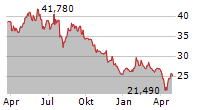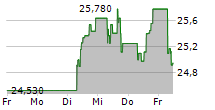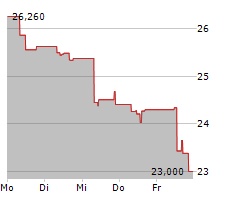

TOKYO, Dec 29, 2023 - (JCN Newswire) - Oita University and Eisai Co., Ltd. (Eisai) hereby announce the development of the world's first machine learning model to predict amyloid beta*1 (Aß) accumulation in the brain using a wristband sensor. This model is expected to enable screening for brain Aß accumulation, which is an important pathological factor of Alzheimer's disease*2 (AD), simply by collecting biological and lifestyle data from daily life.
The details of this model were published in the online edition of the peer-reviewed medical journal Alzheimer's Research & Therapy on December 12, 2023.
In AD, which is said to account for over 60% of the causes of dementia, Abeta begins to accumulate in the brain about 20 years before the onset of the disease. This has prompted the development of new therapeutic drugs targeting Abeta, leading to the approval of an humanized anti-soluble aggregated Abeta monoclonal antibody in Japan. The key to maximizing treatment effects of the medicine is detecting Abeta accumulation in the brain of patients with mild cognitive impairment before the onset of symptoms. Currently, although brain Abeta accumulation can be detected by positron emission tomography(3) (amyloid PET) and cerebrospinal fluid testing(4) (CSF testing), the number of medical institutes able to perform those tests is limited, and the high cost and invasiveness of these tests are considered issues. Therefore, development of an inexpensive and easy-to-use screening method has been sought after to identify those who need amyloid PET or CSF testing.
Although lifestyle factors, including lack of exercise, social isolation, and sleep disorders, as well as diseases, including hypertension, diabetes, and cardiovascular disease are known risk factors for AD, thus far, studies applying machine learning models to predict brain Aß accumulation have used only cognitive function tests, blood tests, and brain imaging tests. In contrast, this is the first machine learning study to focus on "biological data" and "lifestyle data."
This study integrated "biological data" collected by wristband sensors, such as physical activity, sleep, and heart rate, "lifestyle data" obtained from medical consultations, such as number of household members, employment status, frequency of going outdoors, means of transportation, number of days participating in community activity, and "subjects' background", such as age, education history, history of alcohol intake, and medical history (hypertension, stroke, diabetes, heart disease, thyroid disease) to create a machine learning model to predict individuals who are likely to test positive by brain amyloid PET, and evaluated the model's performance. The result of this study showed that the Area Under the Curve (AUC), an evaluatioin index of the prediction model consisting of "biological data", "lifestyle data" and "subjects' background", was 0.79, leading to the decision that the model has sufficient capability for screening. This machine learning model is able to predict brain Aß accumulation using readily available non-invasive variables. As a result, this model appears widely applicable as a pre-screening for people living in areas with little access to amyloid PET and CSF testing, and to reduce financial and physical burden to patients, as well as the costs of clinical studies.
Background and Outline of Research
As Japan has become a super-aging society with the rise in the number of dementia patients over the age of 65, the development of new therapeutic agents for AD, the most common cause of dementia, is an urgent issue. Lifestyle habits such as lack of exercise, social isolation, and sleep disorders, as well as diseases such as hypertension, diabetes, and cardiovascular disease, are known risk factors for AD. The development of drugs targeting Abeta has seen progress in recent years, and this year, an anti-Abeta protofibril antibody was approved in Japan. To maximize the effects of this medicine, it is essential to identify individuals with pre-symptomatic mild cognitive impairment (MCI) who are likely to have elevated brain amyloid accumulation. To date, although reports on machine learning models for predicting brain Abeta accumulation by cognitive function tests, blood tests, and brain imaging tests have been available, no research has focused on biological data or lifestyle data. This research is the world's first attempt to create a machine learning model to predict amyloid positivity in subjects by utilizing "biological data" collected with a wristband sensor, including daily activity, sleep, speech, and heart rate, and "lifestyle data" collected through medical consultation.
Results and Significance of Research, Future Development
This research utilized data from a prospective cohort study on the elderly without dementia aged 65 and older living in Usuki City, Oita Prefecture, conducted between August 2015 and September 2019. 122 individuals (54 men, 68 women, median age 75.50 years) with mild cognitive impairment or subjective memory impairment wore a wristband sensor for approximately 7 days every 3 months. The study also collected lifestyle data through medical consultation, and subjects underwent regular amyloid PET (once a year) examinations over the course of 3 years. The research evaluated a predictive model created with three machine learning technologies, support vector machine, Elastic Net, and logistic regression, to integrate "Biological data" collected by wristband sensors, such as physical activity, sleep, and heartbeat, and "lifestyle data" obtained from medical consultations, such as living with household members, employment status, frequency of going outdoors, means of transportation, number of days participating in community activity, as well as the "subjects' background", such as age, education history, history of alcohol use, and medical history (hypertension, stroke, diabetes, heart disease, thyroid disease). For instance, while the AUC of a predictive model created with only "biological data" collected by the wristband sensors using Elastic Net was 0.70, the AUC of a predictive model created with additional "lifestyle data" and patient background was 0.79, exhibiting improved performance. This research is the world's first attempt to create a machine learning model to predict brain Abeta accumulation by utilizing "biological data" collected with a wristband sensor, including daily activity, sleep, speech, and heart rate, and "lifestyle data" collected through medical consultation, as well as "subjects' background".
Furthermore, using state-of-the-art algorithms the to identify multiple factors which contribute to predicting Abeta accumulation, 22 common factors were identified that were common across the three learning machine technologies. Specifically identified were physical activity, sleep, heart rate, amount of conversation, age, length of education, living with or without children, means of transportation, presence of accompanying person for hospital visits, communication frequencies, and number of outings.
Academic Paper:
Title: Predicting positron emission tomography brain amyloid positivity using interpretable machine learning models with wearable sensor data and lifestyle factors
Authors: Noriyuki Kimura (Department of Neurology, Faculty of Medicine, Oita University) 1,2, Tomoki Aota (Eisai Co., Ltd.) 1, Yasuhiro Aso(Oita Prefectural Hospital), Kenichi Yabuuchi (Department of Neurology, Faculty of Medicine, Oita University), Kotaro Sasaki (Eisai Co., Ltd.), Teruaki Masuda (Department of Neurology, Faculty of Medicine, Oita University), Atsuko Eguchi(Department of Neurology, Faculty of Medicine, Oita University), Yoshitaka Maeda (Eisai Co., Ltd.), Ken Aoshima (Eisai Co., Ltd./University of Tsukuba) 2, Etsuro Matsubara (Department of Neurology, Faculty of Medicine, Oita University)
1. These authors contributed equally to the manuscript.
2. Corresponding author.
Publisher: Alzheimer's Research & Therapy
Please direct any interview requests or inquiries to the contact information provided below
For further information or any inquiries regarding this study Noriyuki Kimura, Associate Professor, Department of Neurology, Faculty of Medicine, Oita University
(1) Amyloid beta: A protein viewed as a cause of Alzheimer's disease, which accumulates in the brain for about 20 years prior to the onset of the disease and forms senile plaques
(2) Alzheimer's disease: the most common cause of dementia, and its pathological characteristics include senile plaques, neurofibrillary tangles, and neuronal cell death
(3) Amyloid PET: a brain imaging test visualizing Aß accumulation in the brain
(4) Cerebrospinal fluid testing: A test analyzing cerebrospinal fluid for Aß42, phosphorylated tau, and total tau as biomarkers of Alzheimer's disease
TEL: +81-(0)97-586-5814
FAX: +81-(0)97-586-6502
Email: naika3@oita-u.ac.jp
Source: Eisai
Copyright 2023 JCN Newswire . All rights reserved.
© 2023 JCN Newswire




